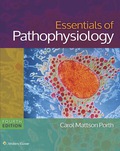
A.
To determine: The mother’s genotype in terms of the sickle cell gene and whether the mother is homozygous or heterozygous.
Introduction: The disorders which are caused by a single mutant or defective gene are known as a single-gene disorder. The mutant gene may be present on an autosome or X chromosome. The defective gene may affect only one member of an autosomal gene pair or both pairs.
A.
Explanation of Solution
The sickle cell anemia is a genetic disorder in which the shape or structure of the red blood cells is changed due to two abnormal genes of the β-globin gene, which is responsible for making hemoglobin. The shape of the blood cells is changed to a sickle-like shape. The genotype of a mother with sickle cell anemia will be HbSHbS( Hb is for hemoglobin and S is for defective sickle cell gene). The mother is homozygous, which means that she will have the same alleles (HbSHbS).
B.
To determine: The probability of their child having the disease or being a carrier of the sickle cell trait.
Introduction: The single gene defect follows the pattern of a mendelian pattern of inheritance and is known as Mendelian disorders. Sickle cell anemia is a blood-related disorder in which there is a decrease in healthy red blood cells.
B.
Explanation of Solution
The sickle cell anemia is an inherited disorder that affects the hemoglobin molecule present in the red blood cell, responsible for carrying the oxygen throughout the body. The people with sickle cell anemia have an abnormal hemoglobin molecule S, which affects the shape of the red blood cell and convert it to a sickle shape.
The mother has sickle cell anemia with genotype HbSHbS, whereas the father may be normal (HbAHbA) or a carrier (HbAHbA) of the trait. If the father is the carrier of the trait, then the chances of the child getting the disorder are 50%, and if the father is normal, then the next generation will be 100% carrier of the disorder.
Want to see more full solutions like this?
Chapter 6 Solutions
EBK ESSENTIALS OF PATHOPHYSIOLOGY
 Human Anatomy & Physiology (11th Edition)BiologyISBN:9780134580999Author:Elaine N. Marieb, Katja N. HoehnPublisher:PEARSON
Human Anatomy & Physiology (11th Edition)BiologyISBN:9780134580999Author:Elaine N. Marieb, Katja N. HoehnPublisher:PEARSON Biology 2eBiologyISBN:9781947172517Author:Matthew Douglas, Jung Choi, Mary Ann ClarkPublisher:OpenStax
Biology 2eBiologyISBN:9781947172517Author:Matthew Douglas, Jung Choi, Mary Ann ClarkPublisher:OpenStax Anatomy & PhysiologyBiologyISBN:9781259398629Author:McKinley, Michael P., O'loughlin, Valerie Dean, Bidle, Theresa StouterPublisher:Mcgraw Hill Education,
Anatomy & PhysiologyBiologyISBN:9781259398629Author:McKinley, Michael P., O'loughlin, Valerie Dean, Bidle, Theresa StouterPublisher:Mcgraw Hill Education, Molecular Biology of the Cell (Sixth Edition)BiologyISBN:9780815344322Author:Bruce Alberts, Alexander D. Johnson, Julian Lewis, David Morgan, Martin Raff, Keith Roberts, Peter WalterPublisher:W. W. Norton & Company
Molecular Biology of the Cell (Sixth Edition)BiologyISBN:9780815344322Author:Bruce Alberts, Alexander D. Johnson, Julian Lewis, David Morgan, Martin Raff, Keith Roberts, Peter WalterPublisher:W. W. Norton & Company Laboratory Manual For Human Anatomy & PhysiologyBiologyISBN:9781260159363Author:Martin, Terry R., Prentice-craver, CynthiaPublisher:McGraw-Hill Publishing Co.
Laboratory Manual For Human Anatomy & PhysiologyBiologyISBN:9781260159363Author:Martin, Terry R., Prentice-craver, CynthiaPublisher:McGraw-Hill Publishing Co. Inquiry Into Life (16th Edition)BiologyISBN:9781260231700Author:Sylvia S. Mader, Michael WindelspechtPublisher:McGraw Hill Education
Inquiry Into Life (16th Edition)BiologyISBN:9781260231700Author:Sylvia S. Mader, Michael WindelspechtPublisher:McGraw Hill Education





